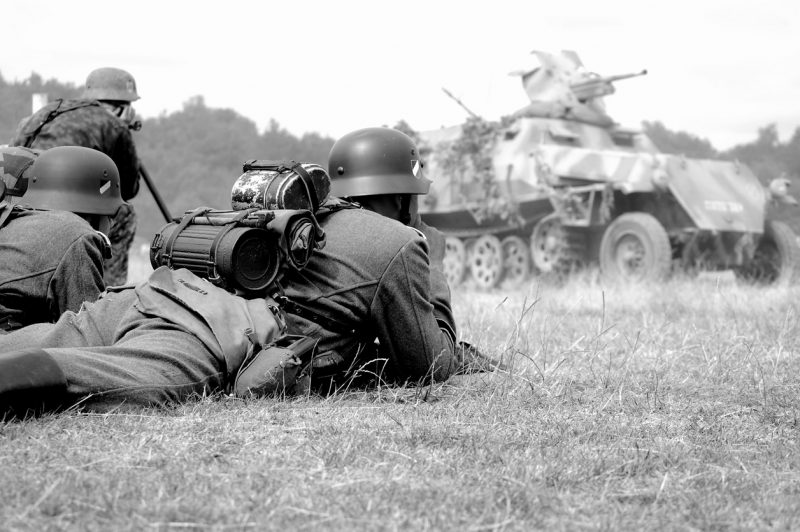“Every day,” Hitler once proclaimed in his book Mein Kampf, “I put my life on the line and always faced death.”
After reading such a patriotic and heroic statement, you might think that Adolf Hitler was right up there in Stalingrad with his troops and guns blazing during World War 2.
The truth of the matter is entirely different. He was positioned close to the front on a few occasions, but he never really spent a lot of time there. The quote above concerns his experience during WW1. During WW2, he was slightly more careful, and he had reason to be.
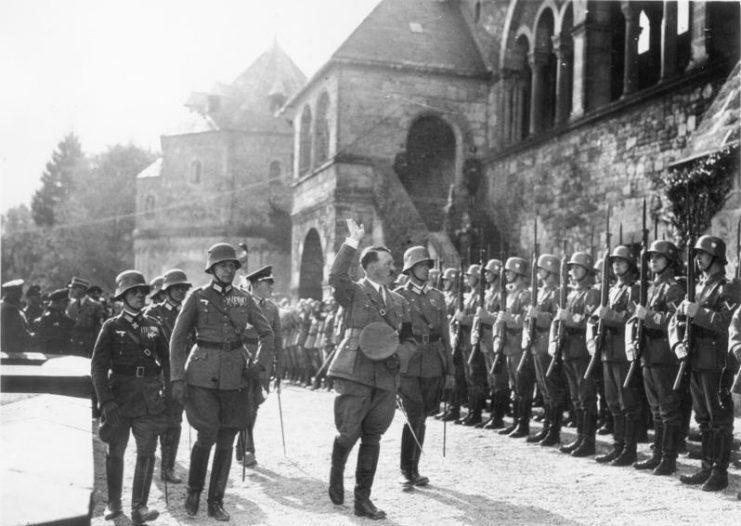
Judging by his military decorations, he was a brave man.
However, the dictator usually only sported two, at most three, of his medals: always the golden party badge of the NSDAP and the Iron Cross First Class, often in addition to the Wound Badge in Black from 1918.
This behavior was very much in contrast to his second in command, Hermann Goering, who decorated himself like a Christmas tree.
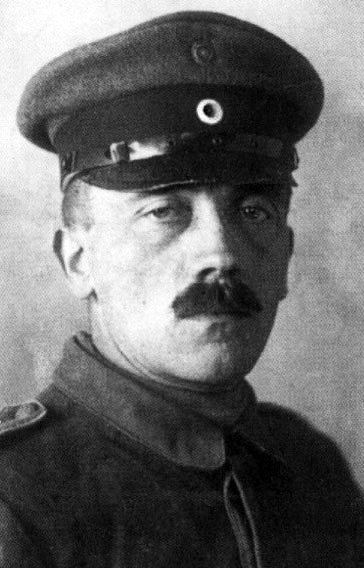
So, Hitler did spend time at the front, but it was mainly during World War 1. Historians view his performance during that time in different shades of gray. Some say he was a hero, while others claim he only briefly saw action.
Yet, according to Hitler’s words about his time at the front, matters were as follows:
“There is only one left of my whole bunch but me, and finally he too falls.” Shortly after that introduction in Mein Kampf, Hitler wrote, “That was the beginning. So it went on year after year, but in the place of battle romance the horror had come.”
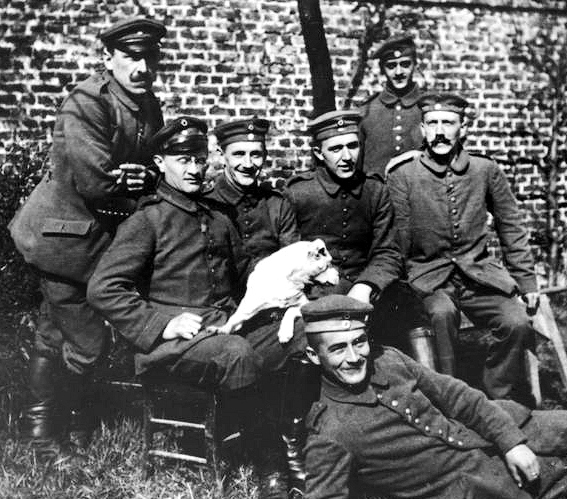
After this initial baptism of fire in a place called Gheluvelt in Flanders, on November 9, 1914, he transferred to the staff of the 16th Reserve Infantry Regiment as a messenger. It was here that he spent the remainder of his time close to the front.
So, what about WW2? Did he ever spend time at the front?
The best way to answer that question is to list the times when he actually visited the front lines.
However, before doing that, we need to define what constitutes the front. Is it being in the thick of the fighting or merely being in the vicinity? If we consider the latter, Adolf Hitler visited the front lines on more than one occasion.
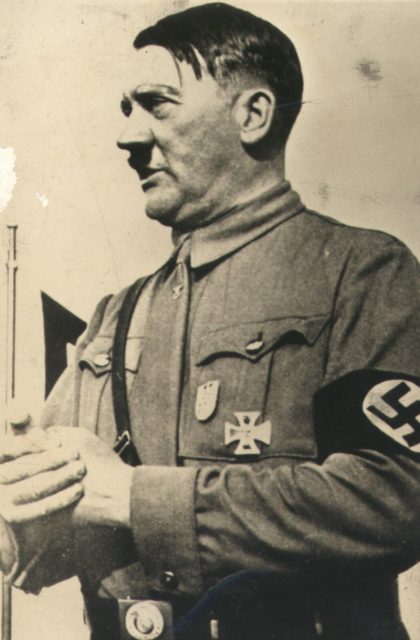
When Nazi Germany invaded Poland in 1939, Adolf Hitler followed his troops in the Führersonderzug or “Hitler’s Special Train,” first to a place called Oppeln near the Polish border and then to Zoppot near Danzig.
Adolf Hitler visited the “Westwall” on one occasion during the Sitzkrieg or “Phony War” that took place from September 1939 to April 1940 after the Blitzkrieg attack on Poland. There was no actual fighting, but it was a hot zone that would soon erupt.
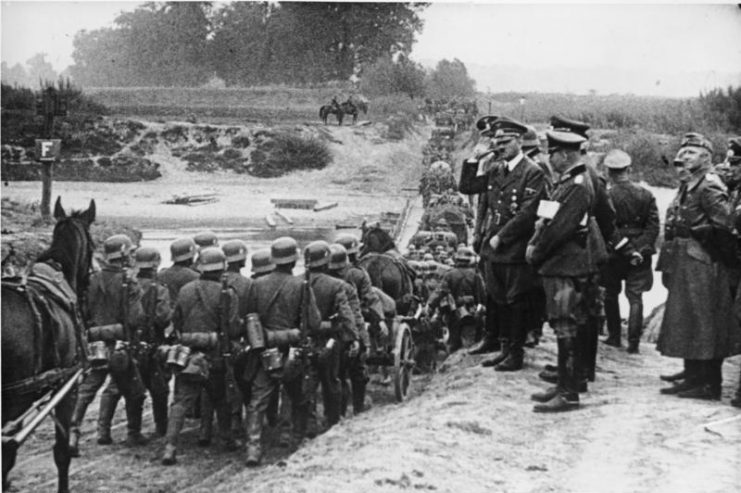
The Invasion of France
On May 10, 1940, a special armored train with the cover name “America” arrived at the military headquarters Felsennest or “Rock Nest” near the Münstereifel. The sun was shining – Hitler later gave his chief meteorologist a golden chronometer as thanks for the precise prognosis.
That same day, 118 German divisions attacked Luxembourg, the Netherlands, Belgium, and France.
On the afternoon of June 21, 1940, a little over six months after the Germans invaded France, Adolf Hitler arrived in Compiègne northeast of Paris. The dictator wanted to attend the subjugation of France personally and ordered that the railroad car where the German defeat in November 1918 was recognized be used for the symbolic ceremony.
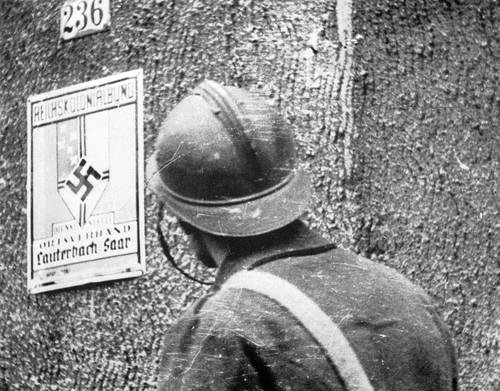
When he entered the forest clearing built by the French as a national pilgrimage site for their victory over Germany in WW1, Hitler discovered a granite block with the inscription: “Here on November 11, 1918, the criminal arrogance of the German Empire failed, defeated by the free peoples, whom it presumed to subjugate.”
Hitler immediately ordered the memorial stone removed.
During the ceremony, the preamble of the ceasefire agreement was read out. It spoke of the “dishonor and humiliation” of Germany after the First World War and of the “deepest shame of all times,” which was now finally being eradicated.
Three days after the surrender, Hitler flew to Paris to undertake a secret sightseeing tour of the French capital with his chief architect Albert Speer. He encountered no resistance – the fight against France had been won.
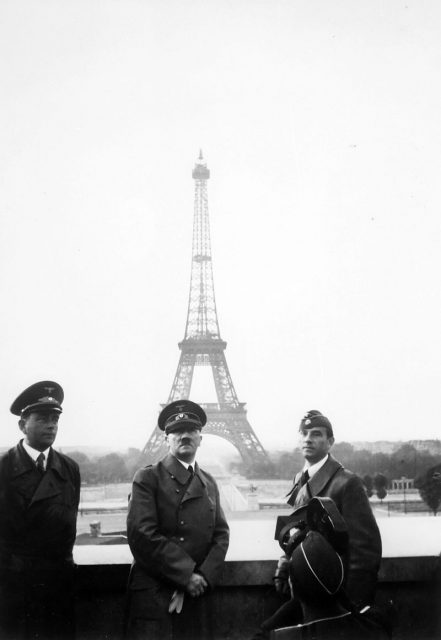
Later, Hitler’s personal photographer, Heinrich Hoffmann, recalled his visit to Les Invalides as follows: “He stood before the sarcophagus of Napoleon, silent and reverent, what was going on inside of him, drawing parallels between himself and the man who had dominated Europe?
At last, he was released from his enchantment; he said emotionally, ‘That was the greatest and most beautiful moment of my life!’”
Operation Barbarossa
The first visit to the Eastern Front was with Benito Mussolini, the Italian fascist leader, in August 1941 when the two dictators flew to Brest-Litovsk to inspect the troops. The second trip the two Axis leaders undertook brought them to Uman in Ukraine, which had been captured earlier in the month, where they visited Italian troops.
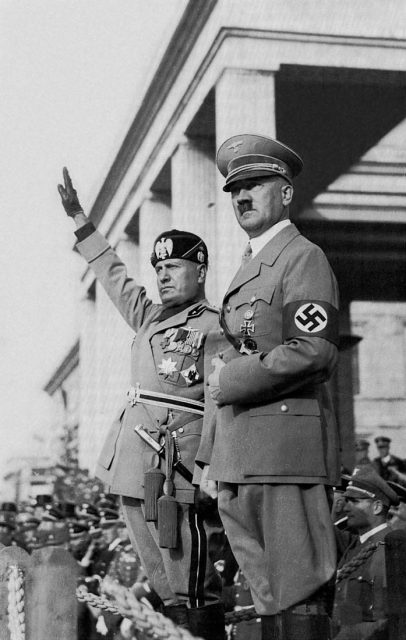
The next time Adolf Hitler visited the Eastern Front was on December 2, 1941, when he went to Army Group South HQ at Mariupol, Ukraine.
Here he met with Field Marshal Gerd von Rundstedt, the supreme commander, and Erich von Manstein, the Chief of Staff, among other commanders present. The reason for the Fuhrer’s visit was logistical and military problems that beset the Wehrmacht near Rostov.
Many historians and contemporaries like Alfred Jodl, a German general, claim that it was here that Hitler first realized the war was lost.
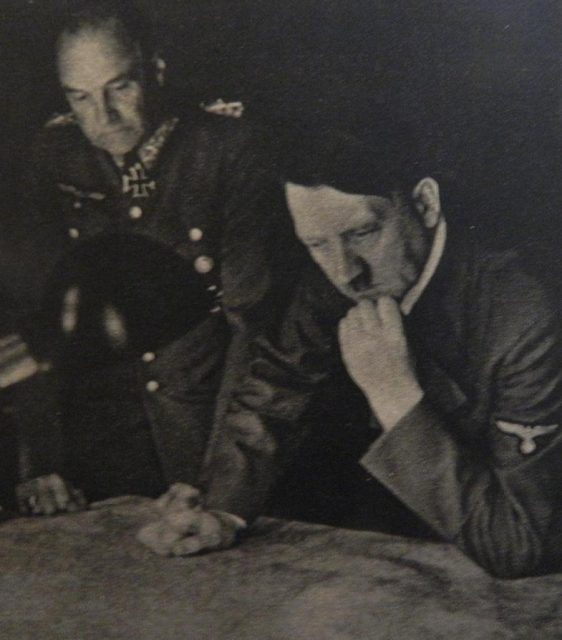
After the meeting with his generals, he planned to return to his HQ in Rastenburg. However, bad weather impeded his return flight, and he had to spend the night in Poltava in a ruined and bug-ridden castle.
Even worse than that, the Führer was cut off from the rest of the world, and he worried what might be going on behind his back.
To top everything off, Hitler was a superstitious man. He was at the place where Tsar Peter of Russia defeated the Swedish King Charles XII some 250 years before.
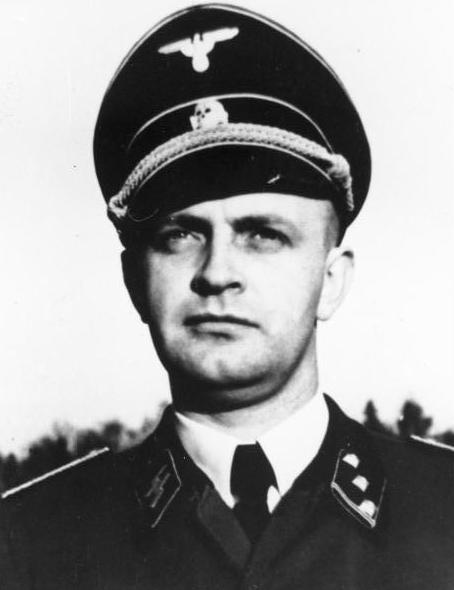
Heinz Linge, Hitler’s servant, later said that his master experienced true panic because of his isolation and the dark foreboding of being in the same place where the Swedish military genius found his end.
In addition, Napoleon had also suffered at the hands of the Russians – the Nazi dictator asked himself whether he too would succumb.
Two days later, after his unscheduled visit at Poltava, the German Wehrmacht suffered a significant setback at the hands of the Soviets near Moscow – it would prove to be the beginning of the end.
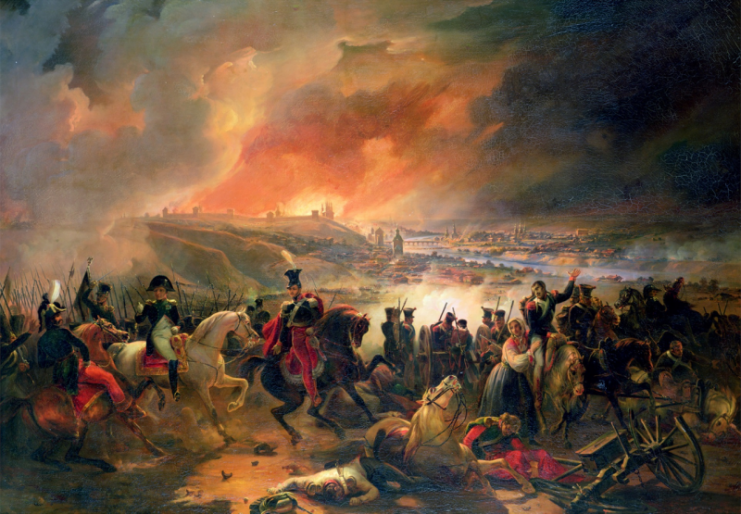
His final visits to the Eastern Front
Special note has to be made of Hitler’s final three sojourns on the Eastern Front because this was when he nearly came face to face with the Soviet nemesis. In February and later March then finally September 1943, Hitler went to the Army Group South HQ at Zaporozhie for the Kharkov offensive and defense.
Great precautions were taken: Adolf Hitler had a complement of SS guards with him, and he even sported a bulletproof vest.
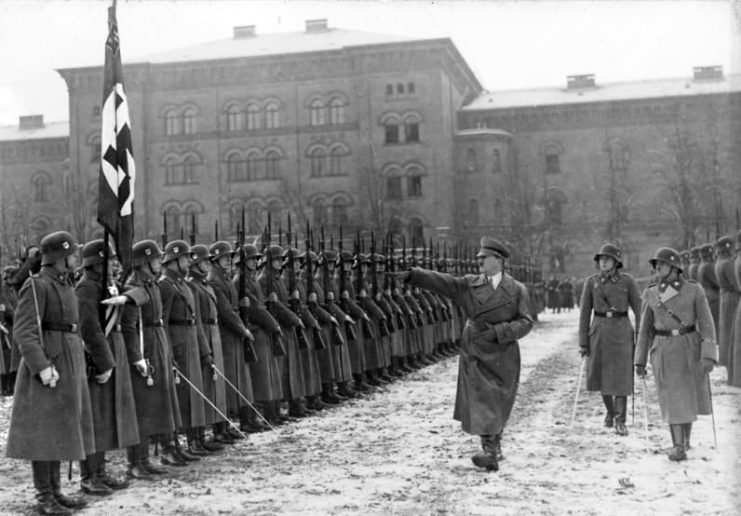
However, strangely enough, it was February 1943 when the Führer was in the greatest danger – strange because, in September 1943, the situation in Zaporozhie was even more perilous. The town on the Dnieper would fall a few weeks after his visit, despite General Manstein’s gallant attempts to counter the offensive.
The best way to describe the situation in February 1943 is to use Hitler’s pilot’s words:
“I was told that Russian tanks had broken through from Dniepropetrovsk, and were advancing towards the town along the very road which passed close to the airfield.
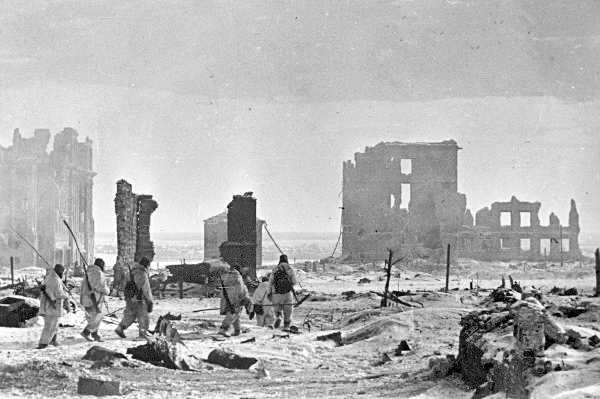
[…] Storch planes sent out to reconnoiter came back with the report that a score or so of Russian tanks were only two hours away, and that there was nothing between them and the airfield.
[…] Sure enough, the Russian tanks appeared after a while: twenty-two of them. But then, fortunately, Hitler came too, and as he was on board, our three Condors, whose engines had already been running, took off.
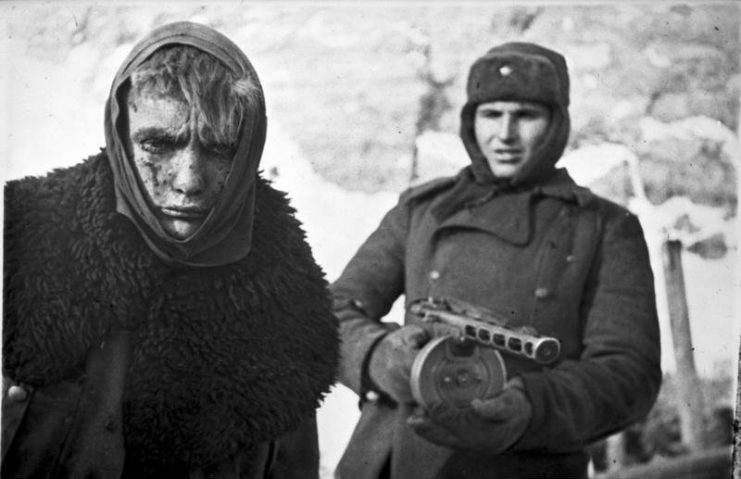
[…] Later on, we heard that to everyone’s surprise the Russian tanks had made no attack on the airfield but had taken up their positions in a nearby kolkhoz, or collective farm, because they had run out of petrol.”
His final frontline visits during the war
Looking at it from the Nazis’ perspective, the Führer’s last trip to the vastly advanced Allied frontline which was already on German territory was in early March 1945 at Frankfurt. He went to inspect the troops and later attend a conference with General Busse.
Hitler’s final appearance in public was the famous awarding of decorations to the Hitler youth in the garden of the Reich Chancellery on March 20, 1945.
NOTE:THIS PHOTO IS FAIR USE. MIMI
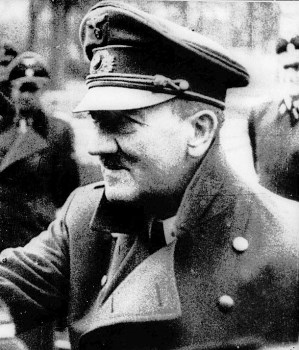
Adolf Hitler’s true final taste of the front during WW2 was shortly before his 56th birthday on April 21, 1945. The full-scale assault of Berlin had begun. It was only a matter of days until Adolf Hitler and his new wife Eva Braun would commit suicide in the Führer Bunker on April 30, 1945.
In summary, the Nazi leader did spend time with his soldiers at or close to the front on more than one occasion. However, it must be said that the Führer only ever went there to award decorations or attend military meetings with his generals.
Read another story from us: Walther Wenck – Hitler’s Last Hope?
Not once did Adolf Hitler visit a military hospital or console the suffering Germans after the air raids in the cities.
Like in Charlie Chaplin’s The Great Dictator, Hitler was a showman until the end.
As he wrote in Mein Kampf: “but in the place of battle romance the horror had come.” He knew of the true devastation of war and never wanted to see it again.
